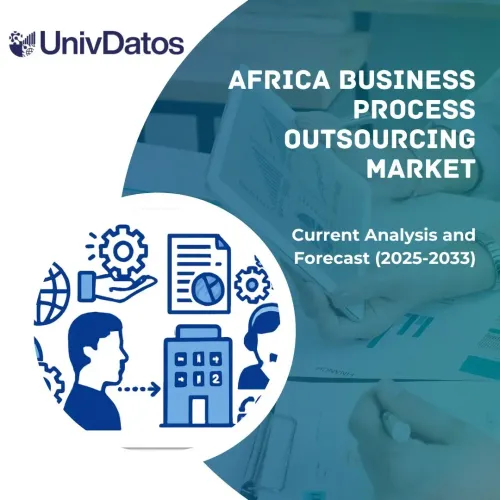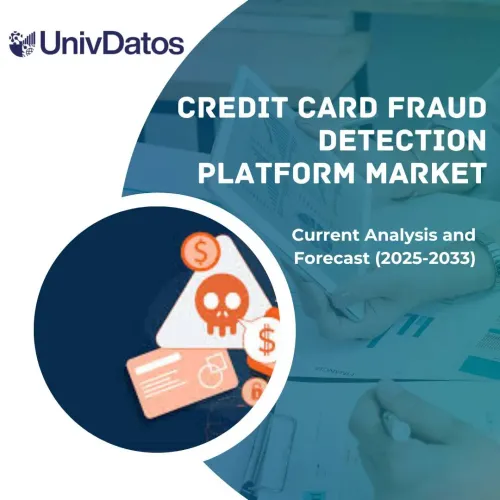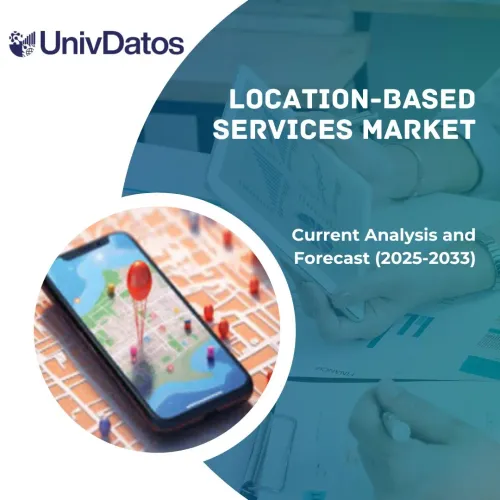- Home
- About Us
- Industry
- Services
- Reading
- Contact Us
Currency Exchange Bureau Software Market: Current Analysis and Forecast (2024-2032)
Emphasis on Application (Large Enterprises and SMEs), Type (Cloud Based and Web Based), Region/Country.
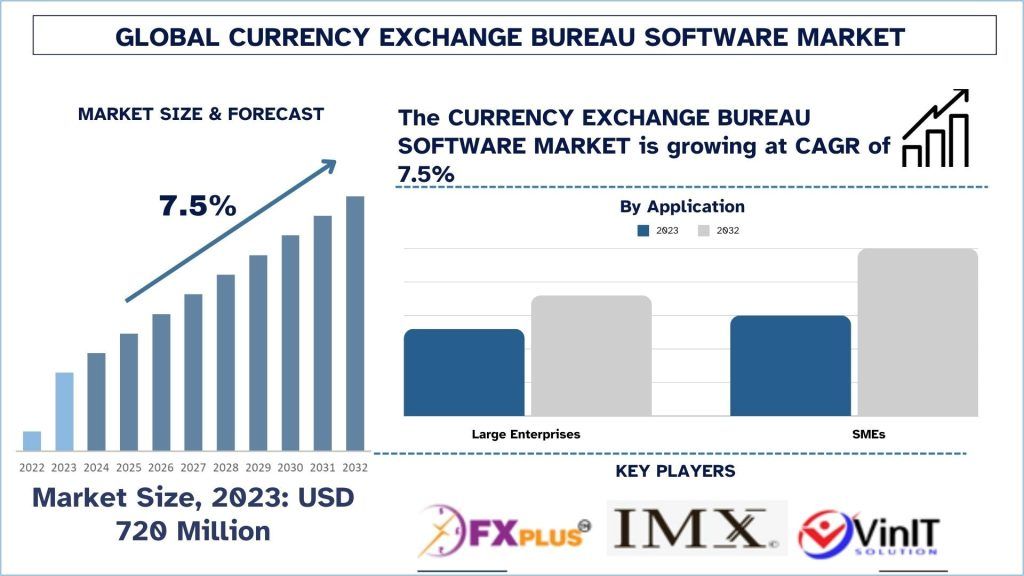 Currency Exchange Bureau Software Market Size & Forecast
Currency Exchange Bureau Software Market Size & Forecast
The Currency Exchange Bureau Software Market holds a promising Potential for Exponential Speedup with a CAGR of 7.5% for the forecast period. High regulatory environment demand is the need to have software that can address regulatory reporting, AML checks, and KYC processes. For instance, solutions offered by Fiserv and NCR Corporation consist of compliance options that allow users to meet local and international legislation. In addition, technologies including AI and machine learning are also advancing the currency exchange bureau software. Firms such as VeriFone and Triton Systems use superior technology to reduce risk and increase functionality.
Currency Exchange Bureau Software Market Analysis
The Currency Exchange Bureau Software Market is the segment of the market that deals with software products exclusively designed for use in currency exchange shops that could be offline-based or online-based. These software solutions help manage exchange operations, control and implementation of standards, clients, and reporting.
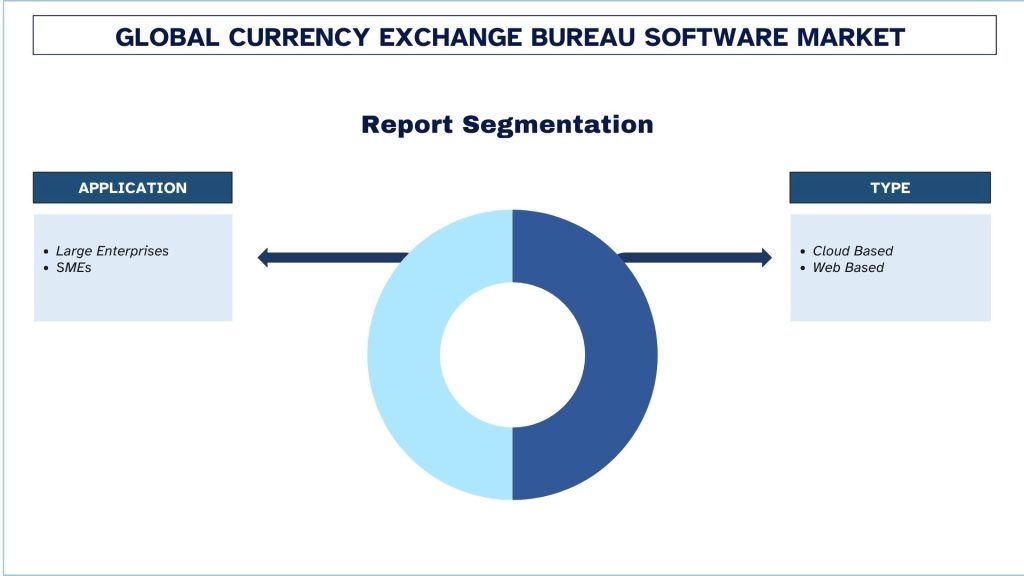
Insights on Currency Exchange Bureau Software Market Segmentation
The segments based on the Application that constitute the Currency Exchange Bureau Software Market include Large Enterprises and SMEs. The Large enterprises segment led the market in 2023. Large enterprises are those companies that are in a position to lay down more resources to finance integrated currency exchange bureau software systems. They can invest in the implementation of a highly developed software solution that corresponds to strict operational demands and evolves in line with organizational development. Also, Large enterprises already possess IT structures and systems that need to be integrated with fresh currency converter software. They prefer those that can be easily interfaced with their ERP systems, financial portals/processors, and other enterprise apps.
Based on the Type, the Currency Exchange Bureau Software Market has been classified into Cloud Based and Web Based. In 2023, the Cloud-Based segment led the Currency Exchange Bureau Software Market. Other advantages of cloud applications are that it has higher flexibility and ease of adjusting to the current business requirements of bureaus in terms of software usage. This flexibility can be very advantageous, especially in today’s market environment where changes in operations can be almost immediate. Also, Cloud service providers pay special attention to security measures and apply more significant resources than individual exchange bureaus. This guarantees the reliability of data protection and conformity to legal specifications, including the GDPR or other sectors’ norms, which are particularly relevant to the financial services industry.
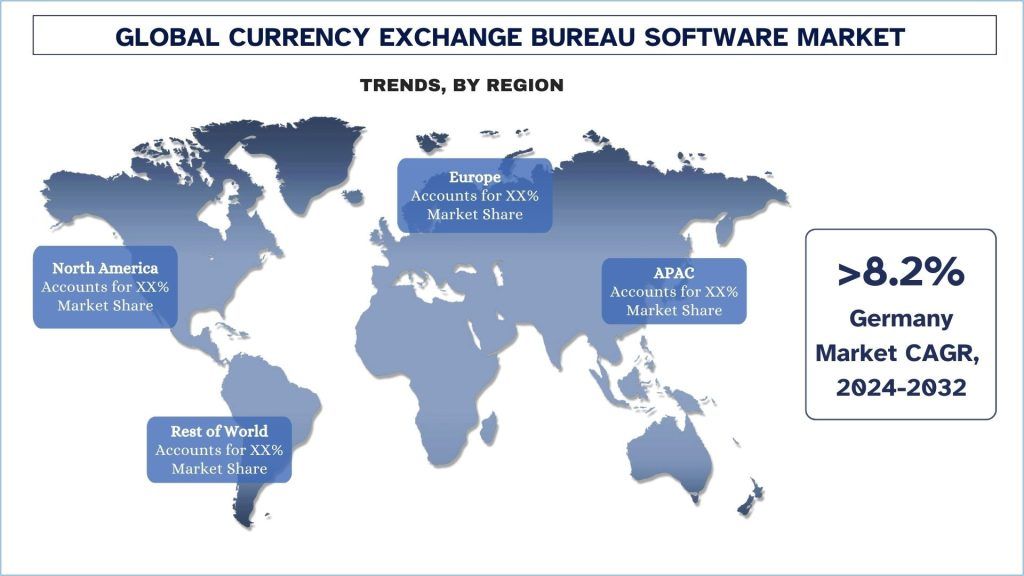
North America held a dominant share of the market in 2023
North America and mainly the United States and Canada have a well-developed financial services industry that accommodates many Forex bureau agencies and financial institutions. This framework enables efficiency through the utilization of software solutions that improve organizational practices. Moreover, the market competition in North America fosters the advancement in software solutions by many providers, and this creates sophisticated currency exchange bureaus software solutions. This is because the region has a huge demand for effective and secure software solutions and services. For instance, companies like NCR Corporation and Fiserv, based in the United States, offer comprehensive currency exchange bureau software solutions that cater to the diverse needs of financial institutions across North America. These solutions are equipped with advanced features for compliance, security, and operational efficiency, contributing to North America’s dominant position in the global Currency Exchange Bureau Software Market in 2023.
Currency Exchange Bureau Software Industry Overview
The Currency Exchange Bureau Software Market is competitive and fragmented, with several global and international market players. The key players are adopting different growth strategies to enhance their market presence, such as partnerships, agreements, collaborations, new product launches, geographical expansions, and mergers and acquisitions. The major players operating in the market are Clear View Systems, Calyx Solutions, OnboarD Software, Cymonz, Donya Exchange, Medoc, Fourex, FX PLUS, IMX Software, and Vinitsolutions.
Currency Exchange Bureau Software Market News
At the end of 2022, the US dollar saw the highest level against other currencies over the past twenty years and several factors impacted it such as the increase in interest rate by FED and the unstable global economies. As for 2023, the dollar has quite a lot of fluctuations, but it is still stronger than in previous years. This explains that named “U. S. Dollar Smile” there is a pattern showing the fact that the dollar performs well when the U.S. economy is strong or when the global economy is weak.
The US dollars share in the world’s international currency reserves decreases over time. The global central banks are moving away from the ‘traditional’ reserve currencies such as the US dollar and euro including the Chinese renminbi, the Australian dollar, and the Canadian dollar. This tendency provokes diversification and better yields, which the given currencies offer.
Mexico, Brazil, and Peru among others have performing currencies although the US dollar is relatively strong in the international market. This has been due to more pronouncements on interest rate increases among other measures by the emerging market’s central banks, the increase in capital inflows, and an even better growth outlook.
Currency Exchange Bureau Software Market Report Coverage
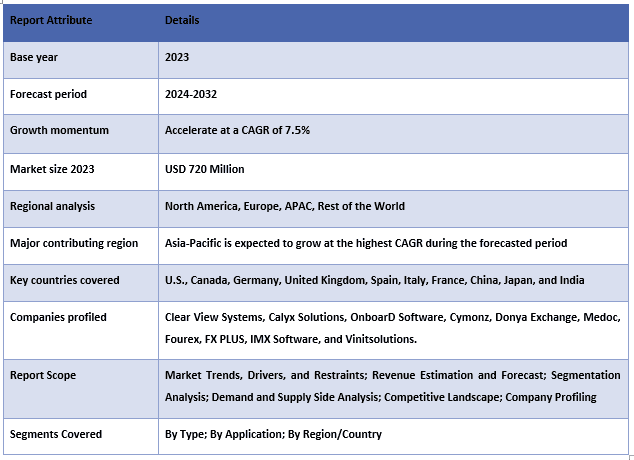
Reasons to buy this report:
- The study includes market sizing and forecasting analysis validated by authenticated key industry experts.
- The report briefly reviews overall industry performance at one glance.
- The report covers an in-depth analysis of prominent industry peers, primarily focusing on key business financials, product portfolios, expansion strategies, and recent developments.
- Detailed examination of drivers, restraints, key trends, and opportunities prevailing in the industry.
- The study comprehensively covers the market across different segments.
- Deep dive regional level analysis of the industry.
Customization Options:
The Global Currency Exchange Bureau Software Market can be customized per requirement or any other market segment. Besides this, UMI understands that you may have your own business needs; hence, feel free to connect with us to get a report that completely suits your requirements.
Table of Content
Research Methodology for the Currency Exchange Bureau Software Market Analysis (2024-2032)
Analyzing the historical market, estimating the current market, and forecasting the future market of the Global Currency Exchange Bureau Software Market were the three major steps undertaken to create and analyze the adoption of Currency Exchange Bureau Software in major regions globally. Exhaustive secondary research was conducted to collect the historical market numbers and estimate the current market size. Secondly, to validate these insights, numerous findings and assumptions were taken into consideration. Moreover, exhaustive primary interviews were also conducted, with industry experts across the value chain of the Global Currency Exchange Bureau Software Market. Post assumption and validation of market numbers through primary interviews, we employed a top-down/bottom-up approach to forecasting the complete market size. Thereafter, market breakdown and data triangulation methods were adopted to estimate and analyze the market size of segments and sub-segments of the industry pertains to. Detailed methodology is explained below:
Analysis of Historical Market Size
Step 1: In-Depth Study of Secondary Sources:
Detail secondary study was conducted to obtain the historical market size of the Currency Exchange Bureau Software Market through company internal sources such as annual reports & financial statements, performance presentations, press releases, etc., and external sources including journals, news & articles, government publications, competitor publications, sector reports, third-party database, and other credible publications.
Step 2: Market Segmentation:
After obtaining the historical market size of the Currency Exchange Bureau Software Market, we conducted a detailed secondary analysis to gather historical market insights and share for different segments & sub-segments for major regions. Major segments are included in the report as Type and Application. Further country-level analyses were conducted to evaluate the overall adoption.
Step 3: Factor Analysis:
After acquiring the historical market size of different segments and sub-segments, we conducted a detailed factor analysis to estimate the current market size of the Currency Exchange Bureau Software Market. Further, we conducted factor analysis using dependent and independent variables such as Type and Application of the Currency Exchange Bureau Software Market. A thorough analysis was conducted for demand and supply-side scenarios considering top partnerships, mergers and acquisitions, business expansion, and product launches in the Currency Exchange Bureau Software Market sector across the globe.
Current Market Size Estimate & Forecast
Current Market Sizing: Based on actionable insights from the above 3 steps, we arrived at the current market size, key players in the Global Currency Exchange Bureau Software Market, and market shares of the segments. All the required percentage shares split, and market breakdowns were determined using the above-mentioned secondary approach and were verified through primary interviews.
Estimation & Forecasting: For market estimation and forecast, weights were assigned to different factors including drivers & trends, restraints, and opportunities available for the stakeholders. After analyzing these factors, relevant forecasting techniques i.e., the top-down/bottom-up approach were applied to arrive at the market forecast for 2032 for different segments and sub-segments across the major markets globally. The research methodology adopted to estimate the market size encompasses:
- The industry’s market size, in terms of revenue (USD) and the adoption rate of the Currency Exchange Bureau Software Market across the major markets domestically
- All percentage shares, splits, and breakdowns of market segments and sub-segments
- Key players in the Global Currency Exchange Bureau Software Market in terms of products offered. Also, the growth strategies adopted by these players to compete in the fast-growing market
Market Size and Share Validation
Primary Research: In-depth interviews were conducted with the Key Opinion Leaders (KOLs) including Top Level Executives (CXO/VPs, Sales Head, Marketing Head, Operational Head, Regional Head, Country Head, etc.) across major regions. Primary research findings were then summarized, and statistical analysis was performed to prove the stated hypothesis. Inputs from primary research were consolidated with secondary findings, hence turning information into actionable insights.
Split of Primary Participants in Different Regions
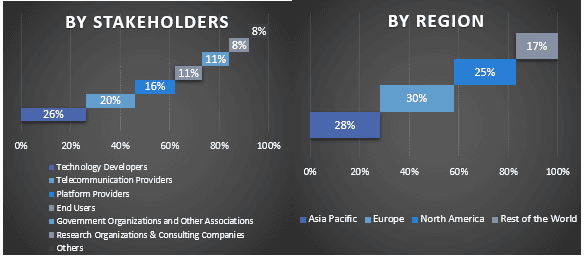
Market Engineering
The data triangulation technique was employed to complete the overall market estimation and to arrive at precise statistical numbers for each segment and sub-segment of the Global Currency Exchange Bureau Software Market. Data was split into several segments and sub-segments after studying various parameters and trends in the areas of Type and Application in the Global Currency Exchange Bureau Software Market.
The main objective of the Global Currency Exchange Bureau Software Market Study
The current & future market trends of the Global Currency Exchange Bureau Software Market were pinpointed in the study. Investors can gain strategic insights to base their discretion for investments on the qualitative and quantitative analysis performed in the study. Current and future market trends determined the overall attractiveness of the market at a regional level, providing a platform for the industrial participant to exploit the untapped market to benefit from a first-mover advantage. Other quantitative goals of the studies include:
- Analyze the current and forecast market size of the Currency Exchange Bureau Software Market in terms of value (USD). Also, analyze the current and forecast market size of different segments and sub-segments.
- Segments in the study include areas of Type and Application.
- Define and analysis of the regulatory framework for the Currency Exchange Bureau Software
- Analyze the value chain involved with the presence of various intermediaries, along with analyzing customer and competitor behaviors of the industry.
- Analyze the current and forecast market size of the Currency Exchange Bureau Software Market for the major region.
- Major countries of regions studied in the report include Asia Pacific, Europe, North America, and the Rest of the World
- Company profiles of the Currency Exchange Bureau Software Market and the growth strategies adopted by the market players to sustain in the fast-growing market
- Deep dive regional level analysis of the industry.
Frequently Asked Questions FAQs
Q1: What is the Currency Exchange Bureau Software Market's current market size and growth potential?
Q2: What are the driving factors for the growth of the Currency Exchange Bureau Software Market?
Q3: Which segment has the largest share of the Currency Exchange Bureau Software Market by Application?
Q4: What are the emerging technologies and trends in the Currency Exchange Bureau Software Market?
Q5: Which region will dominate the Currency Exchange Bureau Software Market?
Related Reports
Customers who bought this item also bought






